Giro Method
Test Location: Crested Butte & Irwin, Colorado
Days Tested: ~35
Lenses Tested:
- VIVID Onyx (14% VLT)
- VIVID Ember (35% VLT)
- VIVID Infrared (58% VLT)
Stated Features:
- Wide field of view
- VIVID lens with Optics by ZEISS®
- EVAK Vent Technology
- Triple-layer face foam with microfleece facing
- Clean and modern lines
- Adapt Strap compatible
- Available in Asian fit
- Helmet compatible
MSRP: $140

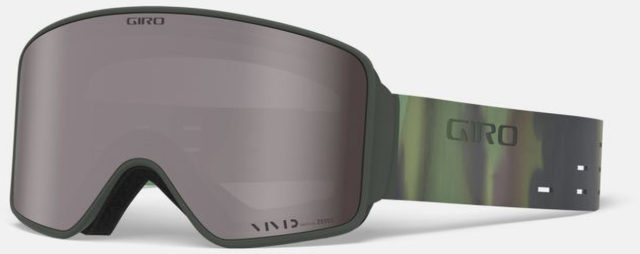
Intro
New for the 19/20 season, the Giro Method was designed with park and pipe skiers in mind, with styling cues in line with other current cylindrical goggles in the segment.
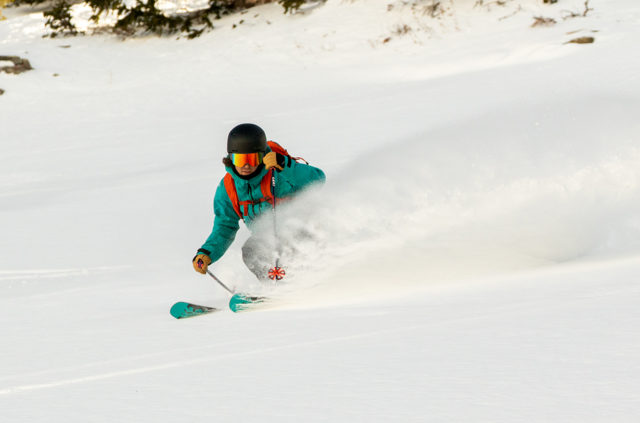
Sharp looks, wide field of view, Giro’s solid lens options, and a moderate price point (for a high-end snowsports goggle) all made the Method a goggle I was excited to check out. Especially given that it comes with two of Giro’s nice VIVID lenses but costs under $150, the Method seemed promising. Luke Koppa and I have both been using it a lot this season, and here’s our take:
Fit
Eric Freson: I have been spending most of my time the last few seasons wearing goggles that typically have some sort of “XL” in their name somewhere. Meaning, I have been wearing some large-framed goggles. The Method was a breath of fresh air in that regard.
The Method doesn’t tout itself as an XL sized frame, and nor should it. 5 years ago the Method would have been on the large size of the spectrum, but these days I’d slot it somewhere in the “medium-large” spectrum. Meaning, for average-sized humans and faces, the Method isn’t going to leave you looking like a space marine, but it does offer above-average field of view (more on that later).
I’d consider myself quite average proportionally in the brainstem area, and the Method fit is spot on. Most importantly I didn’t have any issues with the bridge of my nose / goggle interface as I do with some larger-framed goggles. The Method’s frame material is fairly stiff, but with its thick foam, I didn’t experience any air gaps or pressure points. Interfacing with various helmets was fine, too, including full-face helmets. As always, we recommend trying on goggles (with your helmet) before purchasing to get a better idea of how a particular frame will fit your face.
Luke: Yep, agreed on all fronts. I have a pretty large face / head and the Method fits me very well. For reference, the Method is taller than the Giro Axis, smaller overall than the Anon M4, and similar in terms of overall size vs. the Anon Sync, Smith Squad, and the new Smith Squad Mag.

While its frame is not extremely flexible, I was able to get rid of any air gaps without really cranking on the Method’s strap or creating pressure points, which is something I’m definitely not able to do with all goggles (especially those with stiff and / or really large frames).
Lens Swapping
Eric: Swapping lenses on the Method is by no means as easy as magnetic systems available, but it isn’t rocket science, either. Giro uses what they call a “Slash Seal” system which provides a convenient and easy to follow shelf for the lens to sit on and create a proper seal as you connect the multiple nobs throughout the lens to the frame. It also helps to give the lens an extremely snug fit, which inspired confidence in terms of not worrying about the lens popping out when bouncing your face off your knees, trees, handlebars, or other obstacles.
The “Slash Seal ” system does make knowing where to start removing the lens from the frame a bit less intuitive, however. Because you can see the inner goggle frame through the lens in its entirety around the lens, there is no obvious easy spot or “weak point” from where to start removing the lens from. Turns out there is, and it’s in the lower corners of the goggle on both sides, but you kinda need to know it’s there, or trust pushing the lens out in that location your first time. Not a big deal, but not overtly obvious either. It is a two-handed operation, you will need to put your fingers on the lens itself, and you couldn’t change lenses while wearing them. But unless your swapping lenses multiple times a day, I wouldn’t get too hung up on any of it.
Luke: Yep, this is the main downside of the Method compared to much more expensive options. Changing lenses on the Method took me a while the first time, I had to wipe off my fingerprints each time, and while it’s gotten easier each subsequent time, it’s nowhere near as quick and easy as goggles with magnetic lens-swap systems like the Giro Axis, Smith Mag series, Anon M series, or the dozens of other magnetic goggles out there. But if you’re someone who tends to pick your lenses at the beginning of the day and not change them on the go, the Method will be fine, and again, it’s way cheaper than most magnetic goggles.
Lenses & Optics
Eric: I have been using the Vivid Onyx (14% VLT) and Vivid Infrared (58% VLT) during my time with the Method. The Onyx being my go-to for bluebird Colorado days, and the Infrared being my choice when it’s any kind of overcast or snowing.
Both lenses have been impressive, but I have struggled a bit to completely love the Vivid Onyx lens. In bluebird conditions, it’s excellent, provides plenty of eye relief in sunlight, and has decent contrast. But, if I happen to have them in and the weather patterns change and direct sunlight becomes a scarce resource, I have found the Onyx to be a bit lacking in the contrast department compared to other similar lenses from other manufacturers. To be entirely fair, this is a low-VLT lens, and I’m not trying to say that the Onyx should perform perfectly in all ambient light levels, but I have been a bit disappointed in how quickly contrast on snow is lost when you lose direct sunlight.
On the other hand, I have been very impressed with the Vivid Infrared. At 58% VLT, it lets significantly more light through, and contrast is plentiful in anything but full-on storm conditions. With my blue eyes, the Vivid Infrared is a bit bright in full bluebird conditions for me (not to the extent that I experience eye fatigue at the end of the day), but overall, it’s the lens I reach for when I’m not sure what the weather holds for the day.
Both lenses offer exceptional clarity, and so while the contrast with these two lenses isn’t perhaps as impressive as some other high-end options I have used, the clarity is equal or superior to anything else I can remember using. Like, their clarity was immediately obvious when putting them on outdoors and haze was non-existent. While some people complain about cylindrical goggles’ peripheral distortion, I haven’t noticed this with the Method (though I’ve never really noticed this with any cylindrical goggles).
Luke: I used the Method with Giro’s VIVID Ember (35% VLT) & VIVID Infrared (58% VLT) lenses.
I’ve used both of these lenses in the past on the Giro Axis goggle, and I’m a big fan of both. The Ember causes a very slight amount of eye strain when I’m looking, like, directly at the sun on a full bluebird day. But as long as I listen to my mom and quit staring straight into the glowing orb in the sky, the Ember lens has worked perfectly as my “higher-light” lens. It blocks enough light for bluebird days, but more so than the Onyx lens, also offers enough contrast for all but the lowest-light days.
The Infrared lens is still one of my favorite low-light lenses. Personally, I will just opt for the highest-VLT lens I can get my hands one when light is extremely lacking on the mountain, and I don’t notice a huge difference between different brands’ lowest-light lenses. With that said, the Infrared compares very favorably in my mind compared to other options in that category like the Anon Sonar Blue (46% VLT), Anon Sonar Infrared (57% VLT), and Zeal Optimum Sky Blue Mirror (65% VLT). And as Eric noted, despite its very high VLT rating, the Infrared lens is by no means unbearable to use when the sun does pop out.
The only other thing I’d add is that, at least for me, the Onyx lens does work for mixed-cloud days. Maybe it’s just my eyes, but I find that lens to be one of the more versatile options in that low-VLT category. That said, I would still personally pick something in the 20-35% VLT range like the Ember since it is notably more versatile than the Onyx lens.
Fogging
Eric: Nothing to report here. Minimal fogging, even when finishing a hot lap at the resort, or on a day of full-on snowmobiling. If my core temp isn’t crazy, I have even been able to unstick the sled a few times without feeling like I needed to remove the Methods or risk them totally fogging up. That being said, you can fog em if you try, especially if wearing a helmet and diminishing their ability to move air somewhat. I am a fan of the EVAK Venting design on the Method, which features hydrophobic foam with large cutouts, as it seems to help keep snow from saturating your frame and keeps things drier than a simple foam.
Luke: Yep, I rarely have fogging issues while using most goggles, and have nothing out of the ordinary to report with the Method. It seems to vent quite well, and its foam doesn’t tend to soak up a bunch of water after I tomahawk and pack the top of it with snow.
Field of View
Eric: The Method specifically mentions field of view as a design consideration “so you can spot and stop landings” and it’s good, especially for a “medium-large” frame size. Given the frame’s overall size, I’m most impressed with the Methods side-to-side FOV, which is great. Vertical FOV is average, and like any goggle with a thick frame and foam, looking down your nose you’re going to notice a lot of obstruction there, but it’s nothing I even thought of once while actually skiing.
That being said, if you are looking for maximum FOV, the Method isn’t going to be as wide or tall as something with an oversized frame, such as the Smith Squad XL. In practice, there was never an instance skiing where I was wishing I had a bigger FOV, and it was only noticeable when comparing them back to back with other oversized frames. A reasonable trade-off for a frame that fits my face and doesn’t peg me as an obvious newschool poser.
Luke: I’d say, overall, the Method is quite good when it comes to field of view. Its thick foam means less downward field of view than special options like the Smith 4D Mag or giant spherical goggles like the POC Orb Clarity and Anon M4, but those are more exceptions to the rule, rather than the norm.
The Method offers a slightly broader field of view than the Giro Axis, Zipline Hybrid XT, Glade Adapt, and old Smith I/O7 goggles. The Method seems similar to the Anon Sync, Smith Squad Mag, and Smith I/O Mag XL in terms of field of view.
Helmet Compatibility
Eric: I typically wear a Smith Maze, Smith Code, or Troy Lee Designs D3 helmet, and the Method fits well with all of them. I also tried them on briefly with a Bern Baker and Anon Highwire and had no issues there, either.
One of my favorite aspects of the Method is worth mentioning here — the silicone version of Giro’s “Adapt Strap” is pretty darn rad. I don’t care much about easily being able to swap goggle straps for other colors / patterns, and the coupling method is even a bit finicky (compared to a permanently attached strap). HOWEVER, this is my first plastic/polymer/rubber goggle strap, and I’m a big fan. The higher friction coefficient keeps the strap exactly where you want it on helmets, it’s more robust, does not pile up when stretched / worn out, and in general is an improvement over the traditional goggle straps I’m used to. I dig it.
As with any goggle helmet combo, it’s always best to test it out before you make a purchase.
Luke: I used the Method with two Giro helmets, the new Emerge and the old Combyn. Both match perfectly with the Method, which comes as little surprise, given that they’re made by the same brand. But I think the Method’s moderately rounded (i.e., not super circular nor super flat) upper frame design will work with a wide range of helmets.
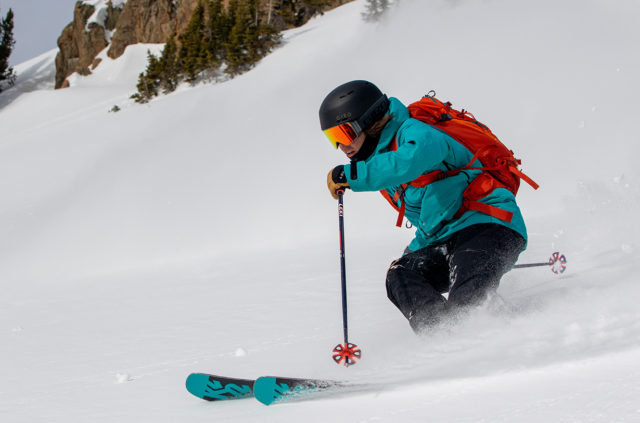
As for the strap, the Method I used came with a more traditional fabric strap and I don’t have much to say about that — pretty par for the course. The silicone strap on the version Eric tested is definitely cool in terms of how well it stays where you want it, though as someone who tends to wear my goggle straps under my helmet (I know, I’m a vain idiot), I prefer the traditional fabric strap as it grabs my hair less and is less prone to bunching up under a helmet.
Durability
Eric: I just told you how much I liked the Method’s silicone goggle strap, in part because the strap is often the weak point of any goggle — stretching out, breaking plastic clips, or just looking gross. So the Method offering a non-fabric (and replaceable) stap is a big plus for me.
I have also been very impressed with how well the exterior lens coatings have held up. I have been using the Method for much of my sled skiing this season, and it has been a fairly frequent occurrence to move branches out of the way with my face while snowmobiling (keep your hands on the bars nerd!), and both lenses are holding up better than expected.
The stiff / robust frame also makes me feel like it’s going to hold up well and resist stress cracking or fatigue for being squished in overstuffed packs. 20 days isn’t enough time to claim they have excellent durability, but I expect that they will over their lifespan.
Luke: I have somewhere around 15 days in my Method, and have no issues to report. No premature strap deterioration (which you could always replace) and no scratches on the lenses. I can’t think of anything about the Method’s design that makes me worried about durability. If anything, its $20 replacement straps and $60 replacement lenses make it a bit more appealing in this regard than other goggles.
Price / Value
Eric: At $140 for the Giro Method with two lenses, this frame is competitive in price when it comes to “medium-large” frames with high-contrast lenses. There are certainly cheaper options out there, most of which will have less refined optics, coatings, and clarity. You can also pay more for goggles with easier to swap lenses, if this is a priority. If optics quality is your number one priority, the Giro Method looks pretty darn good on the price point to me.
Luke: Yeah, I think this is one of the most appealing aspects of the Method. While it’s not quick to swap lenses on it, the Method is $100+ less expensive than many of the top-shelf, quick-swap goggles out there.
BUT, unlike some budget goggles that are even less expensive, the Method still gives you very high-quality lenses, and it gives you two of them. As long as you don’t need to swap lenses on the chairlift or quick swapping is just not a huge priority for you, the Method makes a lot of sense and offers excellent performance for the price.
Bottom Line
Eric: I love the styling of the Giro Method, the optics are excellent, and the goggle itself feels robust, high quality, and built to last. The frame size is spot on for my average face dimensions, and I love that I don’t look like I’m wearing an “XL” sized goggle. The only caveat I’d offer is that if I were to buy a pair for myself, I’d want to check out some of Giro’s other low-VLT lens options to see if they had an option I preferred over the Onyx (likely the Vivid Royal or Black lens). A personal preference thing to be sure, and a very tough thing to articulate in a review with everyone’s eyes being so different.
Luke: Totally agree. I think the Giro Method does an excellent job of combining great optics and lens options, clean aesthetics, and a versatile fit. As long as you don’t need to swap lenses super often or super quickly, it’s an excellent option that doesn’t cost a fortune.

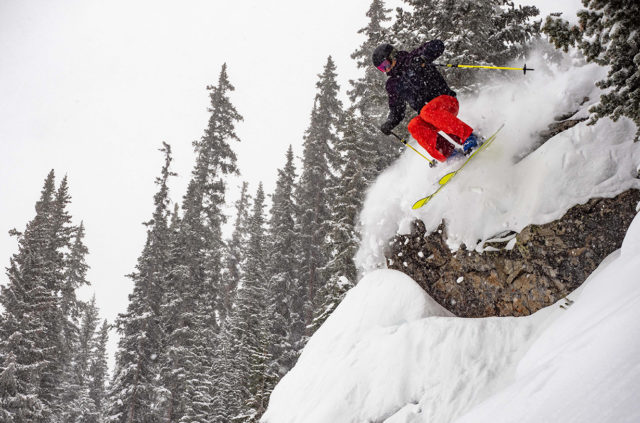
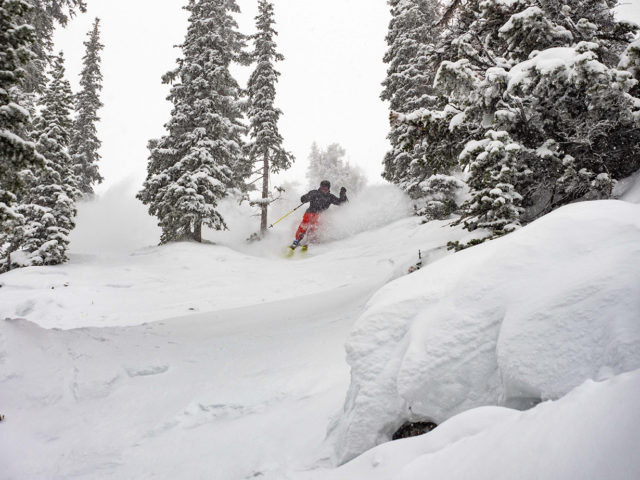
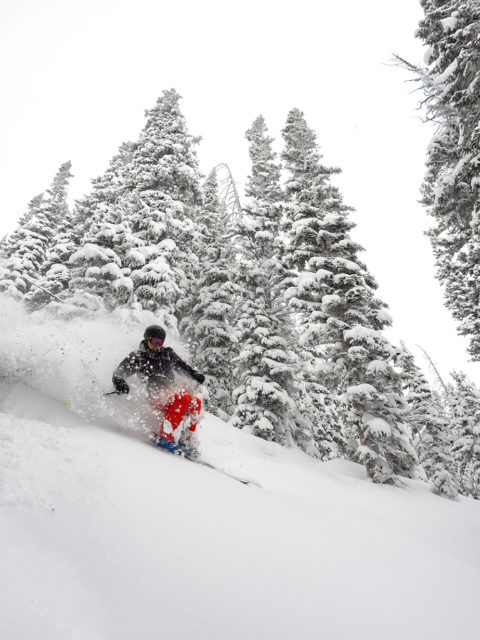


Does Luke match his ski bases to his jackets intentionally?
Ha, not on purpose, but that Open Wear jacket + Reckoner 122 combo doesn’t look too bad…
Was surprised to see it, no new jackets to test?!
We’ve got plenty of jacket reviews coming, but that one is just so, so good
Good news is that as of December Open Wear has been resurrected :o)